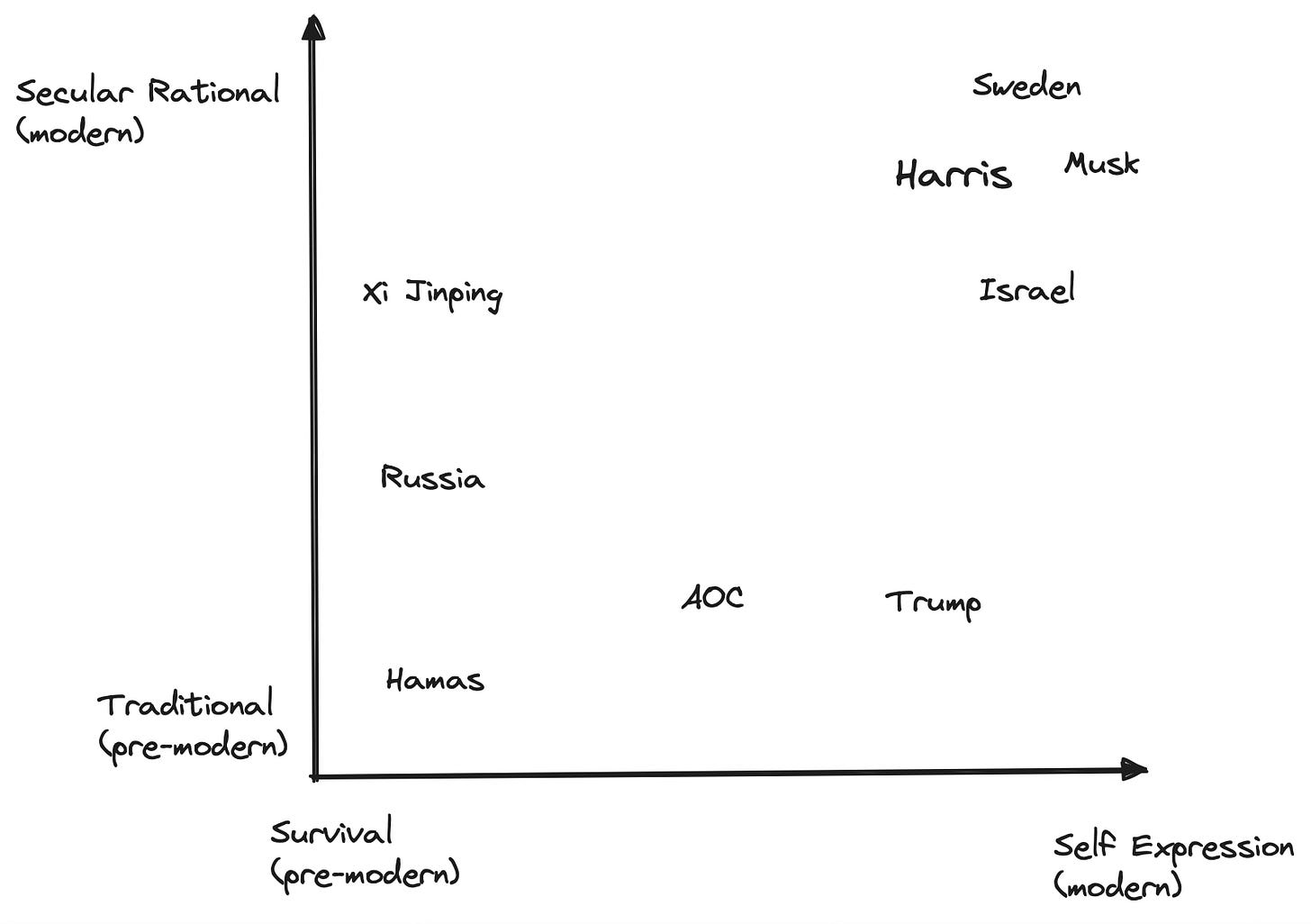A declaration of war by Japan could not be reconciled with reason. I felt sure she would be ruined for a generation by such a plunge, and this proved true. But Governments and peoples do not always take rational decisions.
Winston Churchill, 1941
THIS IS NOT INVESTMENT ADVICE. INVESTING IS RISKY AND OFTEN PAINFUL. DO YOUR OWN RESEARCH.
As I leave for a summer break, I want to share two frameworks:
a) One for our jarring and sometimes violent national and international politics, a framework that hinges on the rate of technological change.
b) One for what’s discounted in financial markets regarding our future rate of technological change.
Politics
When I was a graduate student in the 1990s, I worked for the Associated Press in Boston. The office was a high-ceiling room on High Street. On a scale of forest relative to trees, my stories were trees, discrete factual events, no context. My first was about Canadian fishing rights off Massachusetts.
The same is true of journalists today. We, the audience, read their reporting about discrete, often alarming events. People taken hostage. Trench warfare. Successful and unsuccessful assassination attempts. Purges. Debates over racial purity. It is mostly trees, not forest. Journalists shy away from context because that is hard and more open to interpretation.
A helpful framework for today’s headlines is a technology shift that is forcing a shift and clash in culture and values. Not all values shift. Some, like decency, are timeless. But some structures do shift, like the value placed on in-person work or religion or hierarchy. The global economy has moved from a pre-modern one where wood was fuel and most people were farmers to a modern one based on fossil fuels, an intricate financial sector, and computers. This modern world creates enormous wealth mobility and inequality. The global economy is evolving toward one reliant on artificial intelligence, robots, and a de-centralized, networked workforce. These shifts force a shift in social organization and culture. I note some of these changes in the table below.
This frames today’s antagonists on a scale of secular to traditional and self-expression to survival, borrowing from academic Ronald Inglehart.
Simplistic? Perhaps, but clarifying as well. Hamas’s hatred of Israel is, at one level, a religious and territorial conflict but, on another level the pre-modern world at war with the modern. Ditto Russia vs. Ukraine or the Christian right in the US vs. Kamala Harris or AOC and Xi versus disruptive entrepreneurs.
Cultures forced to change can implode, like Japan’s shift into a highly militarized, suicidal one in the 1930s and 1940s that Churchill wrote about in the quote above. We’re now watching too parts of the world descend into internecine violence based on exactly these fault lines. It seems better than 50% odds this gets worse before it gets better.
Pricing
The degree of future technological change expected is reflected in financial market pricing. Markets are people and people can drive an asset way off fair value. Still, it’s helpful to ground estimates in numbers, even if those numbers are imperfect. Below I sketched out the fair value for both bonds and the most closely followed tech stocks.






